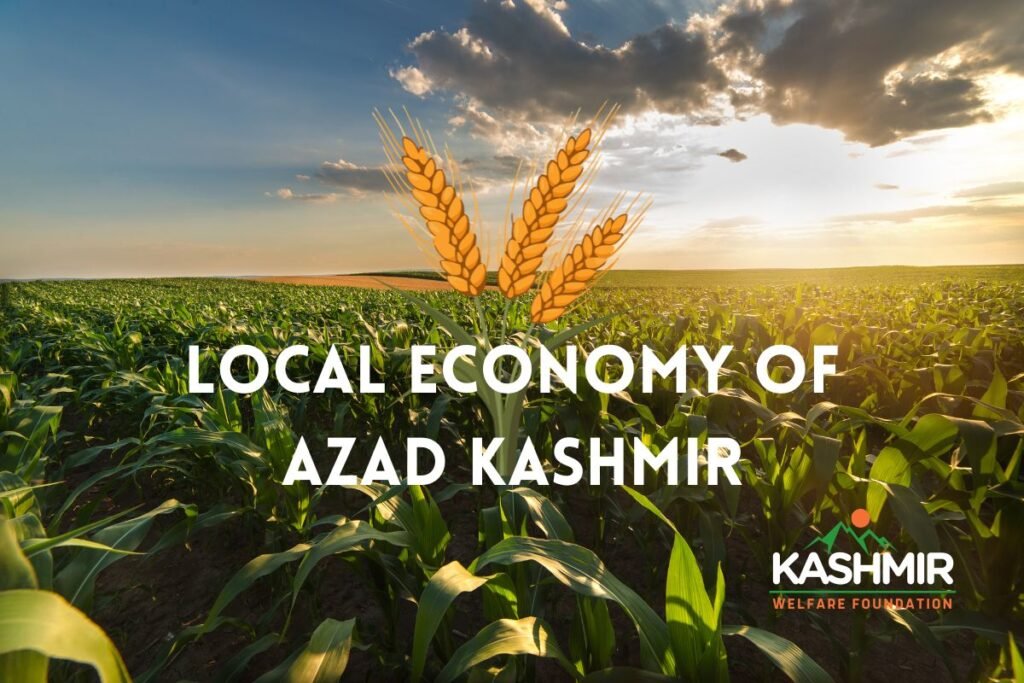Economic Development in Azad Kashmir: An Analysis of Current Economic Trends and Future Potential for Growth in the Region

Introduction to Economic Landscape of Azad Kashmir
Azad Jammu and Kashmir (AJK), often known as Azad Kashmir, lies in the northern part of the South Asia’s Indian subcontinent. This region is characterised by its picturesque landscapes, which span across hilly terrains and river valleys. Covering an area of approximately 13,297 square kilometers, Azad Kashmir is home to a population that exceeds four million people. The demographic diversity features various ethnic groups, each contributing uniquely to the cultural and economic tapestry of the region.
Historically, Azad Kashmir’s economy has been shaped largely by natural resource exploitation and agriculture. Timber from its vast forest reserves, traditional handicrafts, and livestock farming have been significant contributors to the local economy. Additionally, the region has a burgeoning tourism industry, capitalising on its scenic beauty and attracting domestic as well as international visitors. Hydropower is another critical sector, with several major rivers flowing through the region, providing opportunities for energy production.
Nevertheless, Azad Kashmir has faced numerous economic challenges over the years. Political instability, inadequate infrastructure, and limited access to markets have often impeded economic progress. The region’s rugged topography also poses logistical difficulties, affecting transportation and communication networks. Despite these challenges, numerous opportunities present themselves.
In recent years, Azad Kashmir has seen a shift towards modernisation and economic diversification. Investments in infrastructure development, like road networks and communication services, have gradually ameliorated logistical issues. The Azad Kashmir government has focused on harnessing the region’s hydropower potential, which could serve as a cornerstone for future economic growth. Moreover, agricultural modernisation and sustainable forestry practices are being promoted to enhance productivity and environmental conservation.
Understanding Azad Kashmir’s economic landscape necessitates a comprehensive view of its historical context intertwined with present developments. By addressing past impediments and leveraging its natural resources, demographic advantages, and strategic initiatives, Azad Kashmir holds significant potential for future economic growth and development.
Current Economic Trends in Azad Kashmir
Azad Kashmir, a region known for its picturesque landscapes and strategic geopolitical positioning, has exhibited notable economic trends in recent years. The region’s GDP growth has been consistently positive, albeit modest. The GDP increase can primarily be attributed to several key sectors, including agriculture, tourism, and manufacturing, which drive the core economic activities of the region.
Agriculture has long been the backbone of Azad Kashmir’s economy, contributing significantly to both employment and GDP. Traditional farming practices dominate, with significant output in crops such as wheat, maize, and rice. The government has been encouraging modernisation in agricultural methods, which could potentially lead to greater efficiency and higher yields.
Tourism stands out as a burgeoning sector in Azad Kashmir. The region’s natural beauty, cultural heritage, and historical significance attract both domestic and international tourists. Tourist inflow has been increasing, bolstered by infrastructural improvements such as roads, hospitality services, and promotional efforts by the government’s tourism department. This surge in tourism not only generates revenue but also creates employment opportunities and stimulates related industries like hospitality and retail.
Manufacturing, although not as dominant as agriculture or tourism, is also critical to Azad Kashmir’s economic profile. Small and medium-sized enterprises (SMEs) focused on textile, handicrafts, and light manufacturing are contributing increasingly to the region’s economic activity. Investments in industrial zones and the promotion of cottage industries are steps toward bolstering this sector.
Moreover, recent infrastructural developments have played a pivotal role in economic growth. Projects such as the hydropower initiatives, improved road networks, and communication systems have laid down a foundation for sustainable development. These efforts are complemented by government policies aimed at attracting investment, both domestic and foreign. Initiatives to streamline business processes and provide incentives for investors are beginning to show promising results.
Overall, the current economic landscape in Azad Kashmir is characterised by steady growth driven by agriculture, increasing tourism, and burgeoning manufacturing sectors. Recent investments and government policies are setting the stage for enhanced economic activity and development in the region.
Barriers to Economic Development
Azad Kashmir, despite possessing significant potential for economic growth, faces numerous barriers that continue to impede its progress. One of the most critical obstacles is political instability. The region’s complex geopolitical situation often results in uncertainty and conflict, which adversely impacts investor confidence and long-term economic planning. Political strife discourages both local entrepreneurs and foreign investors from committing to substantial economic projects, thus stalling growth.
Access to markets is another significant challenge. Azad Kashmir’s difficult terrain and limited connectivity hinder the efficient movement of goods and services. The region’s trade is often restricted to neighboring areas, reducing the scope for expansion and integration into larger markets. This isolation not only limits local businesses’ growth but also makes it less attractive for international investments.
Infrastructure deficits further exacerbate the economic challenges in Azad Kashmir. Underdeveloped transportation networks, inconsistent electricity supply, and inadequate telecommunications infrastructure pose severe constraints on economic activities. The lack of reliable infrastructure makes it difficult for businesses to operate efficiently, increases operational costs, and reduces the overall competitiveness of the region’s economy.
Regulatory challenges also play a significant role in hindering economic development. The regulatory environment in Azad Kashmir can be complex and opaque, often involving cumbersome bureaucratic procedures that deter business investments. Entrepreneurs face numerous hurdles in navigating these regulations, which can delay project initiation and increase costs. This lack of streamlined regulatory processes serves as a formidable barrier to both domestic and foreign investment.
Lastly, human capital issues present a substantial hindrance to economic growth. The region suffers from a shortage of skilled labor and educational facilities, resulting in a workforce that lacks the necessary expertise to drive innovation and productivity. Human capital development is vital for sustaining economic growth, and without significant improvements in education and training, the region’s growth potential remains stifled.
These barriers collectively impact both local businesses and foreign investment opportunities, creating a challenging environment for economic development. Addressing these issues is crucial for unlocking Azad Kashmir’s economic potential and fostering sustainable growth.
Future Growth Potential and Strategic Recommendations
The future growth potential of Azad Kashmir is promising, with several emerging sectors poised to drive economic advancement. One such sector is tourism, which remains relatively untapped despite the region’s picturesque landscapes and rich cultural heritage. By investing in infrastructure such as improved transportation networks, modern lodging facilities, and effective marketing campaigns, Azad Kashmir can attract both domestic and international tourists, significantly boosting local economies.
Agriculture also holds vast potential as an engine for economic growth. Innovations in sustainable farming practices, coupled with the introduction of high-yield crop varieties, could increase agricultural productivity. Additionally, establishing food processing units within the region would add value to raw agricultural products, ensuring higher earnings for local farmers and generating employment opportunities.
Investment in renewable energy sources, such as hydroelectric power, solar, and wind energy, presents another avenue for growth. Azad Kashmir’s natural resources offer a conducive environment for the development of green energy projects, which can provide stable power supply and attract industries reliant on sustainable energy solutions.
Furthermore, IT and technology sectors are emerging as significant contributors to economic development globally. By creating a conducive environment for tech start-ups and investing in digital infrastructure, Azad Kashmir can position itself as a hub for technology and innovation. This strategy would not only generate jobs but also integrate the region into the global digital economy.
To capitalise on these opportunities, strategic infrastructure projects are crucial. Developing efficient transportation systems, expanding internet connectivity, and modernising power grids would address current logistical and operational bottlenecks. These improvements would create an enabling environment for businesses and investors.
Policy recommendations to unlock Azad Kashmir’s economic potential include fostering public-private partnerships, offering tax incentives to attract domestic and international investors, and implementing educational programs to build a skilled workforce. Learning from the successful economic models of other developing regions, such as some Southeast Asian countries, can offer valuable insights into crafting policies tailored to Azad Kashmir’s unique context.
In summary, with strategic investments and well-crafted policies, Azad Kashmir can harness its abundant natural and human resources to achieve sustainable economic growth, ensuring prosperity for its inhabitants and setting a benchmark in regional development.
 Quick Donate
Quick Donate  Latest Updates
Latest Updates Contact Us
Contact Us
